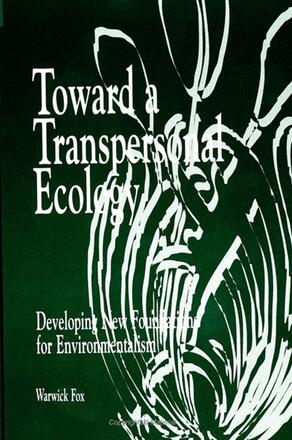
Toward a Transpersonal Ecology
Developing New Foundations for Environmentalism
Alternative formats available from:
Warwick Fox is Australian Research Fellow at the Centre for Environmental Studies, University of Tasmania.
Reviews
"This is the best book on deep ecology that I've come across in years. Anyone interested in the relationship of human beings to the environment ought to read this book. " — Paul R. Ehrlich, co-author of The Population Explosion
"Toward a Transpersonal Ecology is essential reading for teachers, scholars, and all people concerned with the fate of the earth. It is an excellent book that will be used as a benchmark for all discussions of environmental philosophy in the 1990s. " — Bill Devall, co-author of Deep Ecology
"Ecology and spirituality are fundamentally connected, because deep ecological awareness, ultimately, is spiritual awareness. The common ground between deep ecology and transpersonal psychology arising from this connection is explored in scholarly fashion and with great clarity in this important book. Warwick Fox offers us not only some very original and provocative ideas, but also an almost encyclopedic overview of the entire field. Toward a Transpersonal Ecology is essential reading for everyone seriously interested in the philosophical foundations of the emerging new paradigm. " — Fritjof Capra, author of the The Tao of Physics, and founder of The Elmwood Institute
"Toward a Transpersonal Ecology is a pioneering work that brings together two of the most important disciplines of our time, transpersonal psychology and ecology. Warwick Fox's wide reading, thoughtfulness, and subtle distinctions will give readers much to think about. " — Roger Walsh, author of Staying Alive: The Psychology of Human Survival
"Toward a Transpersonal Ecology is a pioneering work that brings together two of the most important disciplines of our time, transpersonal psychology and ecology. Warwick Fox's wide reading, thoughtfulness, and subtle distinctions will give readers much to think about. " — Roger Walsh, author of Staying Alive: The Psychology of Human Survival
"As a leading deep ecology scholar, Warwick Fox provides the most comprehensive and detailed examination of the development of philosophical deep ecology yet in print. " — George Sessions, co-author of Deep Ecology
"The best and most comprehensive overview of deep ecology yet written. I urge environmental philosophers and everyone else with a concern for the relation of humans to the Earth to seek it out. " — Alastair Gunn, Environmental Ethics